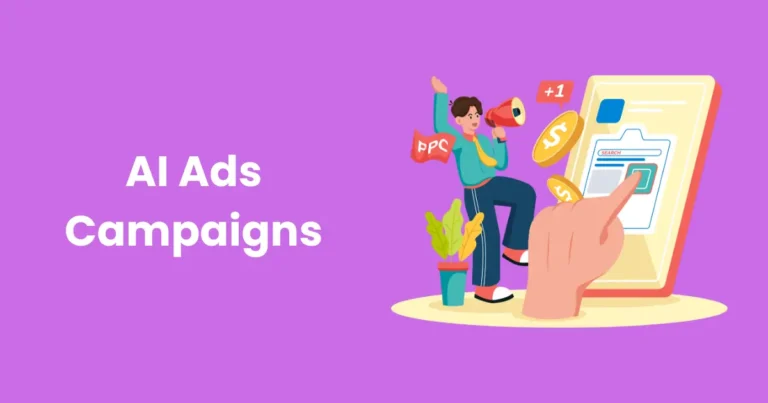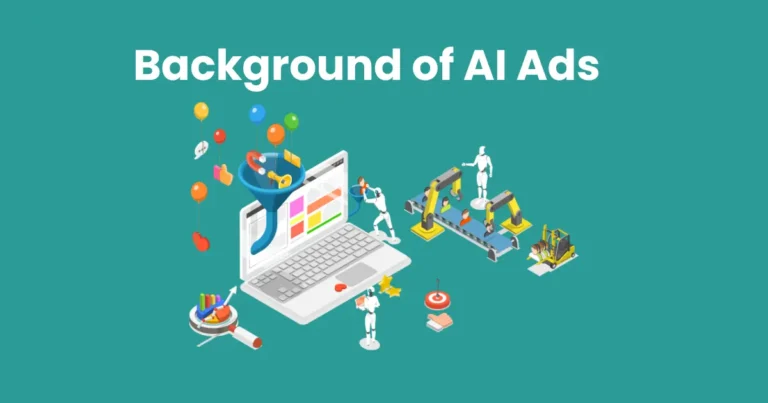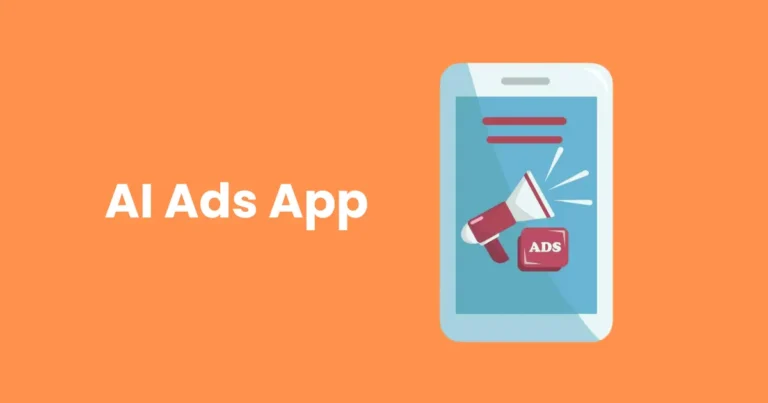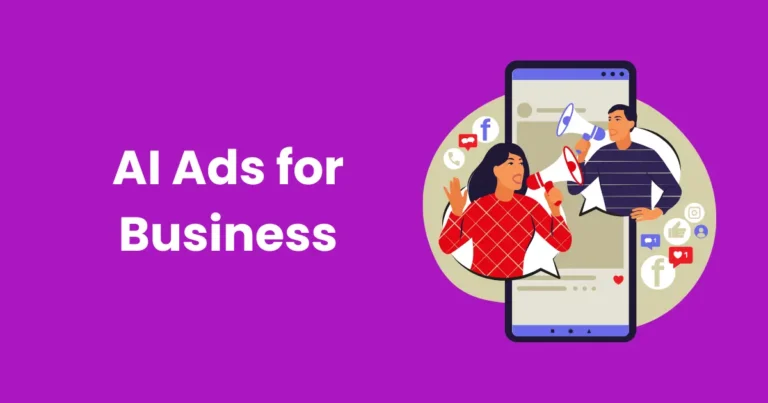Out-Stream Ads | Benefits of Out-Stream Ads
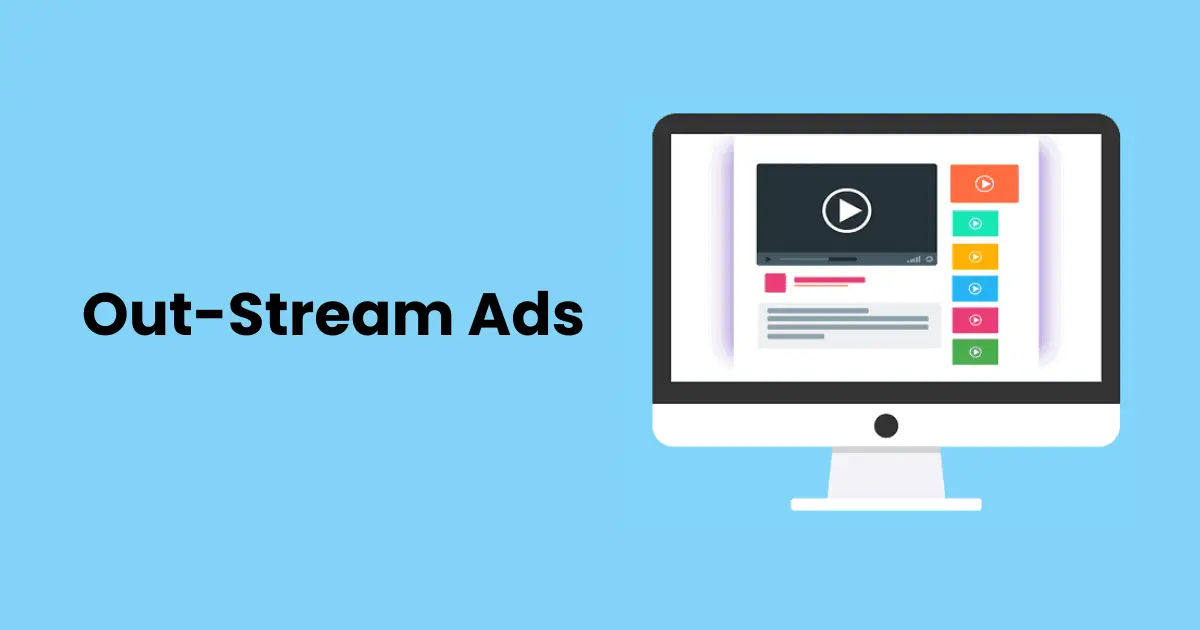
Contents
- 1 Benefits of Out-Stream Ads
- 2 Types of Out-Stream Ads
- 3 Differences Between Out-Stream and In-Stream Ads
- 4 2. Context of Viewing
- 5 Best Practices for Using Out-Stream Ads
- 5.1 1. Prioritize High-Quality Video Content
- 5.2 2. Optimize for Mobile Devices
- 5.3 3. Include Clear and Compelling CTAs
- 5.4 4. Leverage Muted Auto-Play
- 5.5 5. Focus on Audience Targeting
- 5.6 6. Keep Ads Short and Engaging
- 5.7 7. Test and Optimize Campaigns Regularly
- 5.8 8. Integrate Ads Seamlessly into Content
- 5.9 9. Monitor Viewability Metrics
- 5.10 10. Align Ads with User Intent
- 6 The Future of Out-Stream Advertising
- 6.1 1. Increasing Adoption of AI and Automation
- 6.2 2. Enhanced Mobile-First Advertising
- 6.3 3. Integration with Emerging Technologies
- 6.4 4. Growth in Programmatic Advertising
- 6.5 5. Expansion into Non-Traditional Platforms
- 6.6 6. Emphasis on User Experience (UX)
- 6.7 7. Greater Focus on Sustainability
- 6.8 8. Data Privacy and Compliance
- 6.9 9. Evolving Measurement Metrics
- 6.10 10. Increased Use of Storytelling in Ads
- 6.11 Conclusion
Out-stream ads are revolutionizing the digital advertising landscape by offering an innovative approach to video marketing. Unlike in-stream ads that play before, during, or after a video, out-stream ads appear in non-video environments such as within articles, between paragraphs, or inside social media feeds. This unique placement allows out-stream ads to reach audiences where traditional video ads cannot, enhancing engagement and improving visibility.
By integrating seamlessly into content, ads provide a less intrusive experience for users while giving advertisers a powerful tool to boost brand awareness. Whether embedded in articles or scrolling through feeds, out-stream ads capture attention effectively, driving meaningful interactions without disrupting the user journey.
As digital advertising continues to evolve, understanding out-stream ads and their potential can unlock new opportunities for marketers aiming to expand their reach in a cost-efficient and impactful way.
How Out-Stream Ads Work
These ads operate by delivering video advertisements in non-video environments, making them distinct from traditional in-stream ads. Here’s how they work:
- Ad Placement in Content
Out-stream ads are embedded within written or visual content, such as news articles, blogs, or social media feeds. For example, a video might appear between paragraphs of an article or as users scroll through their favorite apps. - Auto-Play Functionality
Typically, out-stream ads start playing automatically when they come into view. However, sound is usually muted by default, ensuring a non-intrusive experience. Users can opt to unmute and engage further if the content catches their attention. - User-Initiated Engagement
Unlike in-stream ads that users must watch to continue their primary activity (like viewing a video), out-stream ads rely on user-initiated engagement. If viewers find the ad relevant or interesting, they can choose to watch it, making interactions more intentional and impactful. - Viewability Metrics
One key feature of out-stream ads is that advertisers only pay when their ad is viewable. This means the ad must be visible on the screen for a specific duration, ensuring better ad performance and cost-efficiency. - Dynamic Adaptability
Out-stream ads adapt to the environment they’re displayed in. Whether on desktop, tablet, or mobile, these ads adjust their size and orientation to deliver an optimal viewing experience.
By appearing in non-video environments, ads break traditional barriers in video advertising, reaching audiences in more diverse contexts. This flexibility ensures advertisers can engage users across a wide range of platforms and content types.
Benefits of Out-Stream Ads
Out-stream ads offer a range of advantages that make them an appealing choice for advertisers looking to maximize engagement and ROI. Here are the key benefits:

1. Enhanced User Engagement
Out-stream ads appear in environments where users are actively consuming content, such as news articles or social media feeds. Since these ads are seamlessly integrated into the content, they are less intrusive and more likely to capture the user’s attention, leading to higher engagement rates.
2. Higher Viewability
Unlike in-stream ads, which users may skip or ignore, out-stream ads only play when they are in view. Advertisers pay only for viewable impressions, ensuring that their budget is spent effectively. This higher viewability translates into better campaign performance.
3. Cost-Effectiveness
Out-stream ads are generally more affordable than traditional in-stream ads. Since advertisers pay only for visible ads, the cost-per-view is often lower, delivering a better return on investment (ROI) for brands.
4. Flexibility Across Platforms
Out-stream ads are highly adaptable and can appear on various platforms, including desktop, mobile, and tablets. This versatility enables advertisers to reach audiences across multiple devices, enhancing the overall campaign reach and effectiveness.
5. Non-Intrusive Advertising
One of the standout features of out-stream ads is their ability to provide a non-disruptive experience. They don’t interrupt users’ primary activities, such as watching a video or reading an article. This creates a positive impression of the brand and reduces the chances of ad fatigue.
6. Broader Audience Reach
Because out-stream ads appear in non-video environments, they allow advertisers to reach a wider audience. From readers of online articles to social media users, these ads ensure the brand’s message gets in front of diverse demographics.
Out-stream ads not only enhance user experience but also deliver exceptional results for advertisers by combining affordability, viewability, and flexibility. By leveraging these benefits, marketers can create impactful campaigns that resonate with their target audiences.
Types of Out-Stream Ads
Out-stream ads come in various formats, allowing advertisers to choose the type that best fits their campaign goals and target audience. Each type is designed to integrate seamlessly into different digital environments, ensuring flexibility and effectiveness. Here are the primary types of out-stream ads:

1. In-Feed Video Ads
In-feed video ads are displayed within social media feeds, news platforms, or content recommendation widgets. These ads appear as users scroll, blending naturally into the surrounding content.
- Example Platforms: Facebook, LinkedIn, Instagram.
- Best Use Case: Social media campaigns targeting specific audience segments.
2. In-Article Video Ads
In-article video ads are embedded directly within the text of articles or blogs. They play automatically when users scroll to the ad’s location, stopping if the user scrolls past.
- Example Platforms: News websites, blogs, and online magazines.
- Best Use Case: Brand storytelling or engaging users on information-heavy platforms.
3. Native Video Ads
Native video ads are designed to match the look and feel of the platform on which they appear. These ads provide a seamless experience that feels like a natural part of the user’s journey.
- Example Platforms: Content-heavy apps, websites, and mobile environments.
- Best Use Case: Creating subtle, non-disruptive advertising experiences.
4. Floating or Sticky Video Ads
Floating or sticky video ads remain visible on the screen as users scroll through content. These ads are usually positioned in a corner of the screen and continue playing until dismissed or completed.
- Example Platforms: News and e-commerce sites.
- Best Use Case: Capturing user attention in long-scroll content.
5. Interstitial Video Ads
Interstitial video ads are full-screen ads that appear between content pages or during natural breaks in the user experience, such as transitioning from one article to another.
- Example Platforms: Mobile apps and websites.
- Best Use Case: Maximizing impact with visually compelling, full-screen content.
6. Expandable Video Ads
Expandable video ads start as smaller ad units and expand when users interact with them, offering a larger, more immersive video experience.
- Example Platforms: Interactive websites and apps.
- Best Use Case: Engaging users who prefer interactive and dynamic content.
Each type of out-stream ad offers unique benefits, and selecting the right format depends on the platform, audience behavior, and campaign objectives. By choosing the appropriate type of out-stream ad, brands can create impactful campaigns that drive engagement and conversions.
Differences Between Out-Stream and In-Stream Ads
Out-stream and in-stream are two distinct types of video advertisements, each designed for specific purposes and platforms. While both aim to capture user attention, they differ significantly in their placement, format, and functionality. Here’s a breakdown of the key differences:

1. Placement
- Out-Stream Ads:
These ads appear in non-video environments, such as within articles, social media feeds, or on websites. They are independent of video content. - Example: A video ad embedded between paragraphs of a blog post.
- In-Stream Ads:
These ads are embedded within video content and play before (pre-roll), during (mid-roll), or after (post-roll) a video. - Example: A YouTube ad that plays before a video starts.
2. Context of Viewing
- Out-Stream Ads:
These are displayed in environments where users are primarily engaging with text, images, or other non-video content. - In-Stream Ads:
These are part of a video experience and require users to engage with video content to see the advertisement.
3. User Control
- Out-Stream Ads:
These are typically user-initiated. They play when they come into view but often rely on the user to interact, such as clicking to unmute or continue watching. - In-Stream Ads:
These are generally not skippable (for short formats) or have limited user control, especially during pre-roll or mid-roll.
4. Cost Structure
- Out-Stream Ads:
Advertisers pay only for viewable impressions, meaning the ad must meet certain criteria, such as being visible on the user’s screen for a specific duration. - In-Stream Ads:
Advertisers typically pay per view (e.g., cost-per-view or CPV), often tied to metrics like completed views or clicks.
5. Intrusiveness
- Out-Stream Ads:
These ads are less intrusive, as they do not interrupt a user’s primary activity. Users can scroll past them without much disruption. - In-Stream Ads:
These are more interruptive since they are tied to the video content the user wants to watch, which can sometimes frustrate viewers.
6. Target Audience
- Out-Stream Ads:
Ideal for reaching audiences in diverse digital environments, such as those consuming written or visual content. - In-Stream Ads:
Best suited for targeting video-centric audiences who are already engaged in watching video content.
By understanding these differences, advertisers can make informed decisions about which type of ad to use based on their campaign goals, audience preferences, and the platforms they want to target. Both out-stream and in-stream ads have their strengths, and leveraging them strategically can lead to effective and impactful advertising.
Best Practices for Using Out-Stream Ads
To maximize the effectiveness of out-stream ads, advertisers need to adopt strategies that align with audience preferences and platform capabilities. Below are the best practices for using out-stream ads to ensure higher engagement and better ROI:

1. Prioritize High-Quality Video Content
- Why It Matters: The success of out-stream ads heavily depends on the quality of the video. Poorly designed or low-resolution ads can lead to disengagement.
- Best Practice: Invest in professional production to create visually appealing and concise videos that effectively convey your message.
2. Optimize for Mobile Devices
- Why It Matters: A significant portion of users consume content on mobile devices, making mobile optimization essential for wider reach.
- Best Practice: Ensure your ads are responsive and adapt to different screen sizes. Use vertical or square formats to align with mobile-first platforms.
3. Include Clear and Compelling CTAs
- Why It Matters: Without a strong call-to-action (CTA), users may not know what step to take after viewing the ad.
- Best Practice: Use concise and action-oriented CTAs, such as “Learn More,” “Shop Now,” or “Sign Up Today,” to drive conversions.
4. Leverage Muted Auto-Play
- Why It Matters: Out-stream ads typically play muted by default, and users often decide whether to engage based on the first few seconds.
- Best Practice: Use engaging visuals, subtitles, or text overlays to grab attention without relying on sound.
5. Focus on Audience Targeting
- Why It Matters: Out-stream ads are most effective when shown to the right audience in the right context.
- Best Practice: Use advanced targeting options, such as demographics, interests, and browsing behavior, to ensure your ads reach the intended viewers.
6. Keep Ads Short and Engaging
- Why It Matters: Attention spans are short, especially in non-video environments.
- Best Practice: Limit video length to 15-30 seconds. Highlight the most important message within the first few seconds to capture interest immediately.
7. Test and Optimize Campaigns Regularly
- Why It Matters: Continuous testing helps identify what works and what doesn’t, allowing for improvements over time.
- Best Practice: Experiment with different ad formats, placements, and creatives. Use analytics to track performance and adjust strategies accordingly.
8. Integrate Ads Seamlessly into Content
- Why It Matters: Out-stream ads that blend naturally into their surroundings are more likely to engage users.
- Best Practice: Ensure the ad design and format match the platform’s look and feel for a non-intrusive experience.
9. Monitor Viewability Metrics
- Why It Matters: Out-stream ads charge based on viewability, so understanding performance metrics is essential for cost-efficiency.
- Best Practice: Use tools to measure how long ads remain in view and optimize placement to maximize visibility.
10. Align Ads with User Intent
- Why It Matters: Ads that resonate with the audience’s interests and current activity are more likely to perform well.
- Best Practice: Match your message to the context of the content, ensuring relevance and increasing the likelihood of user engagement.
By following these best practices, advertisers can harness the full potential of out-stream ads, delivering impactful campaigns that resonate with their target audience and achieve their marketing objectives.
The Future of Out-Stream Advertising
Out-stream advertising has emerged as a game-changer in the digital marketing world, offering flexibility and non-intrusive ad experiences. As the digital landscape evolves, the future of these ads is poised for further growth and innovation. Here’s a look at key trends and predictions shaping the future of out-stream advertising:

1. Increasing Adoption of AI and Automation
- Trend: Artificial intelligence (AI) will play a significant role in optimizing out-stream ad campaigns. From audience targeting to creative personalization, automation will enhance efficiency and effectiveness.
- Future Impact: AI-driven analytics will help advertisers deliver highly tailored ads, ensuring relevance and higher engagement rates.
2. Enhanced Mobile-First Advertising
- Trend: With the rise of mobile device usage, out-stream ads will increasingly focus on mobile-friendly formats, such as vertical videos and swipeable content.
- Future Impact: Mobile-first strategies will enable advertisers to reach on-the-go audiences with ads optimized for smaller screens and touch interactions.
3. Integration with Emerging Technologies
- Trend: Technologies like augmented reality (AR), virtual reality (VR), and 360-degree videos will be integrated into out-stream ads.
- Future Impact: Interactive and immersive experiences will revolutionize how users engage with advertisements, offering higher levels of engagement and brand recall.
4. Growth in Programmatic Advertising
- Trend: Programmatic advertising will drive the automated buying and placement of out-stream ads, making it easier to target audiences at scale.
- Future Impact: Real-time bidding and programmatic algorithms will ensure precise ad placements, reducing costs and maximizing ROI for advertisers.
5. Expansion into Non-Traditional Platforms
- Trend: Out-stream ads will extend beyond traditional websites and apps to new platforms like connected TVs (CTV), wearable devices, and smart home systems.
- Future Impact: Brands will have opportunities to engage users in unique environments, creating novel advertising experiences.
6. Emphasis on User Experience (UX)
- Trend: As user preferences evolve, advertisers will focus on making out-stream ads more user-friendly, with minimal disruption to the browsing experience.
- Future Impact: Non-intrusive ad formats, such as scroll-based and muted autoplay videos, will become standard, improving viewer satisfaction.
7. Greater Focus on Sustainability
- Trend: Advertisers and platforms are becoming more environmentally conscious, focusing on reducing the carbon footprint of digital ads.
- Future Impact: Sustainable practices, such as lightweight ad formats and energy-efficient technologies, will influence the way out-stream ads are delivered.
8. Data Privacy and Compliance
- Trend: As privacy regulations like GDPR and CCPA continue to shape the industry, advertisers will need to balance personalization with data protection.
- Future Impact: Transparent data practices and contextual targeting will replace invasive tracking methods, ensuring ethical advertising while maintaining effectiveness.
9. Evolving Measurement Metrics
- Trend: Metrics for out-stream ads will go beyond traditional KPIs like impressions and clicks, focusing more on engagement, viewability, and brand lift.
- Future Impact: Advanced analytics tools will provide deeper insights into how users interact with ads, allowing for more informed decision-making.
10. Increased Use of Storytelling in Ads
- Trend: Storytelling will become central to out-stream ad campaigns, as brands aim to connect emotionally with their audience.
- Future Impact: Compelling narratives delivered through short, engaging videos will drive user engagement and foster brand loyalty.
The future of out-stream advertising is bright, fueled by advancements in technology, evolving consumer behavior, and an increasing focus on non-intrusive and engaging ad experiences. By staying ahead of these trends, advertisers can leverage the full potential of out-stream ads to create impactful and meaningful connections with their audiences.
Conclusion
The ads have revolutionized the digital advertising landscape, offering a non-intrusive and highly versatile way for brands to connect with their target audience. By appearing outside traditional video content, these ads open new opportunities for engagement across various platforms and devices.
The flexibility of out-stream ads allows advertisers to tailor their campaigns to suit specific audiences and contexts, ensuring relevance and effectiveness. With benefits such as improved viewability, cost efficiency, and enhanced user experience, they have become a powerful tool in any marketer’s arsenal.
As the digital world continues to evolve, the potential for ads will only grow. Innovations in technology, including AI, immersive formats, and mobile optimization, will shape the future of this advertising method, ensuring that it remains a key component of successful marketing strategies. By adopting best practices and staying ahead of emerging trends, advertisers can leverage out-stream ads to create meaningful connections, achieve marketing objectives, and drive long-term business success. Out-stream advertising is not just a trend—it’s the future of digital engagement.

